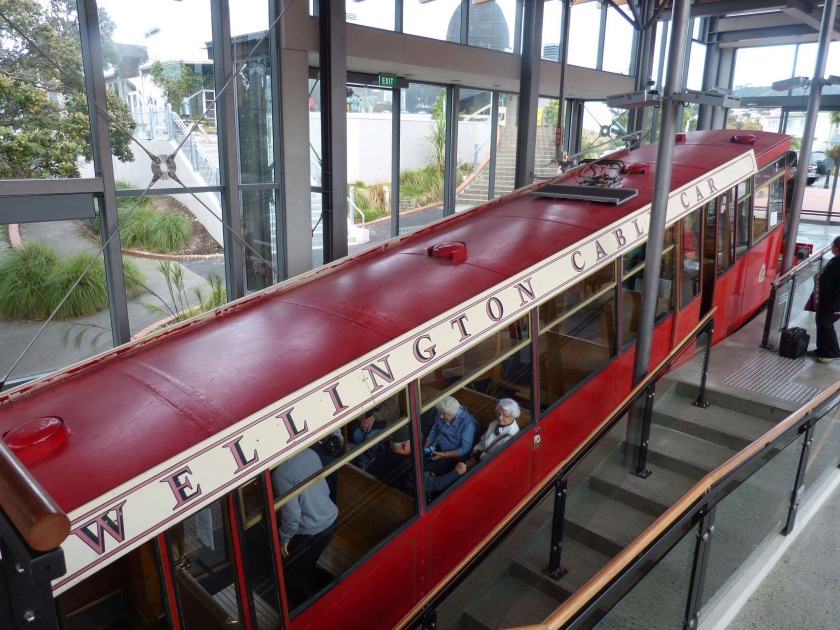We had hoped to stay in Ypres for the Last Post service at the Menin Gate which takes place every evening at 8pm. However, our last bus back to Langemark left 5minutes before the ceremony was due to begin, so we resigned ourselves to miss out on the service this time. But Gary & Jen, who were the other Kiwis on our tour around the battlefields came to our rescue, inviting us to have dinner with them before the service, then watch the ceremony with them and they would drop us off on their way back to their accommodation at Ostend. What legends!
We had dinner in a bistro a bit away from the main centre and Menin Gate and got to know our new friends a bit better over a drink before our meal.
 Roy’s choice of dark Belgian beer.
Roy’s choice of dark Belgian beer.
We had been told earlier by our tour guide to be at the gate by 6.30 and she also told us the best best place to stand for the optimum viewing. There was quite a large crowd gathering and by the time the ceremony started it was fairly packed.
From 11 November 1929 the Last Post has been sounded at the Menin Gate Memorial every night and in all weathers. The only exception to this was during the four years of the German occupation of Ypres from 20 May 1940 to 6 September 1944. The daily ceremony was instead continued in England at Brookwood Military Cemetery, Surrey. On the very evening that Polish forces liberated Ypres the ceremony was resumed at the Menin Gate, in spite of the heavy fighting still going on in other parts of the town. Bullet marks can still be seen on the memorial from that time.
We took our place for the ceremony and began our wait.
 These are some of the 54,000 Commonwealth soldiers names engraved on the walls of the memorial gate, no New Zealand names though except for those who served with British or Australian Forces, NZ soldiers are listed on the dedicated NZ Memorials. It’s difficult to visualise the numbers killed, however to put it into perspective 54,000 would be a capacity crowd at Eden Park.
These are some of the 54,000 Commonwealth soldiers names engraved on the walls of the memorial gate, no New Zealand names though except for those who served with British or Australian Forces, NZ soldiers are listed on the dedicated NZ Memorials. It’s difficult to visualise the numbers killed, however to put it into perspective 54,000 would be a capacity crowd at Eden Park.
There was a visiting regiment of English Army Engineers, we got chatting to the Major who told us that this year the soldiers reciting the poem and laying a wreath had a family connection to the Battles of Passchendaele which made it all the more poignant.

“They shall grow not old, as we that are left grow old:
Age shall not weary them, nor the years condemn.
At the going down of the sun and in the morning,
We will remember them.”
 there was also a piper who played a lament.
there was also a piper who played a lament.
It is amazing to think that this whole ceremony is organised, run and manned by volunteers, including the buglers. They do an amazing job from stopping the traffic going through the gates from 7.30pm to making sure that those who wish to lay a wreath are accommodated. We watched a large number of groups lay wreaths and flowers, including our kiwi friends from yesterday who laid a wreath on behalf of the 28th Maori Battalion.
After the service ended we met up with our friends from yesterday, the wreath layers, who were so impressed with Gary & Jen looking after us that they presented them with both Poi and a badge, kiwis looking after kiwis whilst away from home is what it is all about. We left after lots of hugs and well wishes and it wasn’t long until we were safely delivered back to our Apartment in Langemark. Thanx Gary & Jen from Hamilton, we wish you well on the rest of your travels.
The warmth and friendship shown to us on this trip from both locals and fellow kiwis alike has been humbling and refreshing.

 The Cloth Hall before and after WW1.
The Cloth Hall before and after WW1.







 The grassed mass tomb overlooked by 4 statues.
The grassed mass tomb overlooked by 4 statues.











































































